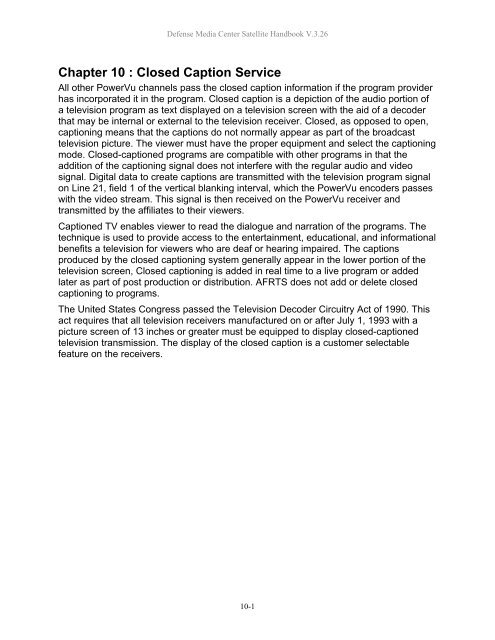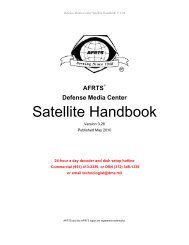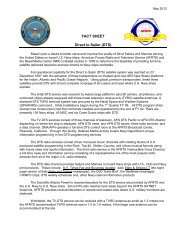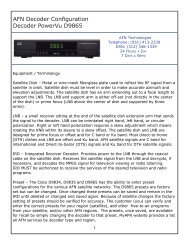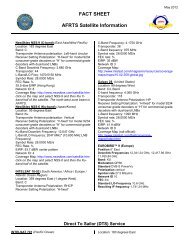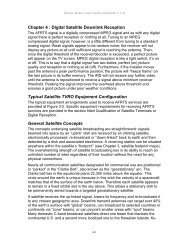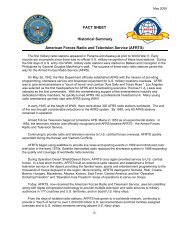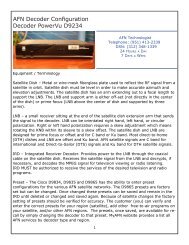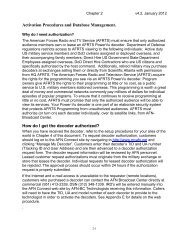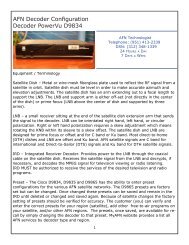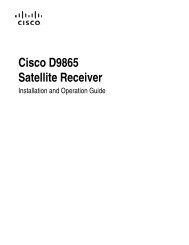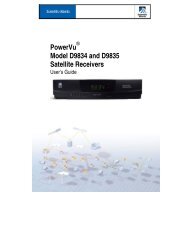AFRTS Defense Media Center Satellite Handbook
AFRTS Defense Media Center Satellite Handbook
AFRTS Defense Media Center Satellite Handbook
Create successful ePaper yourself
Turn your PDF publications into a flip-book with our unique Google optimized e-Paper software.
<strong>Defense</strong> <strong>Media</strong> <strong>Center</strong> <strong>Satellite</strong> <strong>Handbook</strong> V.3.26<br />
Chapter 10 : Closed Caption Service<br />
All other PowerVu channels pass the closed caption information if the program provider<br />
has incorporated it in the program. Closed caption is a depiction of the audio portion of<br />
a television program as text displayed on a television screen with the aid of a decoder<br />
that may be internal or external to the television receiver. Closed, as opposed to open,<br />
captioning means that the captions do not normally appear as part of the broadcast<br />
television picture. The viewer must have the proper equipment and select the captioning<br />
mode. Closed-captioned programs are compatible with other programs in that the<br />
addition of the captioning signal does not interfere with the regular audio and video<br />
signal. Digital data to create captions are transmitted with the television program signal<br />
on Line 21, field 1 of the vertical blanking interval, which the PowerVu encoders passes<br />
with the video stream. This signal is then received on the PowerVu receiver and<br />
transmitted by the affiliates to their viewers.<br />
Captioned TV enables viewer to read the dialogue and narration of the programs. The<br />
technique is used to provide access to the entertainment, educational, and informational<br />
benefits a television for viewers who are deaf or hearing impaired. The captions<br />
produced by the closed captioning system generally appear in the lower portion of the<br />
television screen, Closed captioning is added in real time to a live program or added<br />
later as part of post production or distribution. <strong>AFRTS</strong> does not add or delete closed<br />
captioning to programs.<br />
The United States Congress passed the Television Decoder Circuitry Act of 1990. This<br />
act requires that all television receivers manufactured on or after July 1, 1993 with a<br />
picture screen of 13 inches or greater must be equipped to display closed-captioned<br />
television transmission. The display of the closed caption is a customer selectable<br />
feature on the receivers.<br />
10-1


